Is the World Ready for Good News on Climate?
A new assessment of plausible futures suggests reasons for considerable optimism on climate policy
Come on a time travel trip with me and our new paper just out (me along with Matt Burgess and Justin Ritchie). Let’s go back to 2005 and take a look at how the world’s top energy and climate experts envisioned the range of plausible futures for climate change to 2100, and explore how they might react to our new analysis. The future is always an unknown place, but if we are going to create desirable futures, then we need to have some way of reliably projecting where were are headed and how we might alter course if we decide that we are headed in a wrong direction.
In climate policy, expectations for the future have long been characterized as scenarios, which according to the Intergovernmental Panel on Climate Change allow us to assess “a range of plausible futures, because human development is determined by a myriad of factors including human decision making.” There are of course a very wide range of plausible scenarios for the future, defined as “a variety of future states that are considered ‘occurrable’ (could happen).”
The figure below illustrates the future as an expanding cone of possibilities — of which some are possible, plausible and probable, with some futures more preferrable than others. The notion of “business as usual” has long been considered to be where we are currently headed if we don’t change course. We implement policy to try to shape the cone of future possibilities toward more preferred outcomes.
So we step out of our time machine in 2005. We find the climate science community, under the auspices of the IPCC, embarking on an effort to produce and assemble a set of plausible scenarios for the long-term climate future to help guide our thinking and action on climate policy. Back then, as today, it was generally accepted in policy that futures with less carbon dioxide emissions were preferrable to those with more. Plausible scenarios can help us think through how to achieve that goial.
It took several years, but the climate science community eventually assembled a very large number of scenarios to represent a wide range of what were then considered to be plausible scenarios of the future — 1,311 scenarios, in fact. To simplify and streamline research the climate science community initially picked 4 of these scenarios as priorities for research, and later added 7 more.
As we got into our time machine we brought with us some information from 2022. Thanks to our new research, in 2022 we know which scenarios remain plausible of the 1,311 IPCC scenarios produced years ago, and the small subset of 11 used most commonly in climate research.
How have we judged which scenarios remain plausible in 2022? We use two methods:
One is to look at how the world actually evolved from 2005 to 2020. That provides some real world data against which to evaluate scenarios. If key elements of an IPCC scenario have already departed from the trajectory of the future envisioned by a scenario, then it is implausible.
A second method is to use the best estimates of energy system experts for the near-term trajectory of key scenario elements. If the elements of an IPCC scenario have already departed from the trajectory of the future envisioned by a scenario, then it is implausible.
It turns out, using our most restrictive criterion and comparing to real-world data from 2005 to 2020, only 71 (about 6%) of the original 1,311 IPCC scenarios remained plausible in 2022. Using data and near-term projections 2005 to 2050, only 35 (less than 3%) of IPCC scenarios remained plausible. You can see the range of plausible scenarios for 2100 (blue) compared to trajectories of all scenarios (grey) in the figure below, along with the 2020 Stated Policies scenario to 2050 of the International Energy Agency (dark blue line).
You will notice that the figure above includes net negative emissions for some scenarios starting later this century. We don’t know if such scenarios are themselves plausible, because such carbon removal technologies do not yet exist at scale. So we can also look at the plausible scenarios with the removal of negative emissions and that figure is shown below.
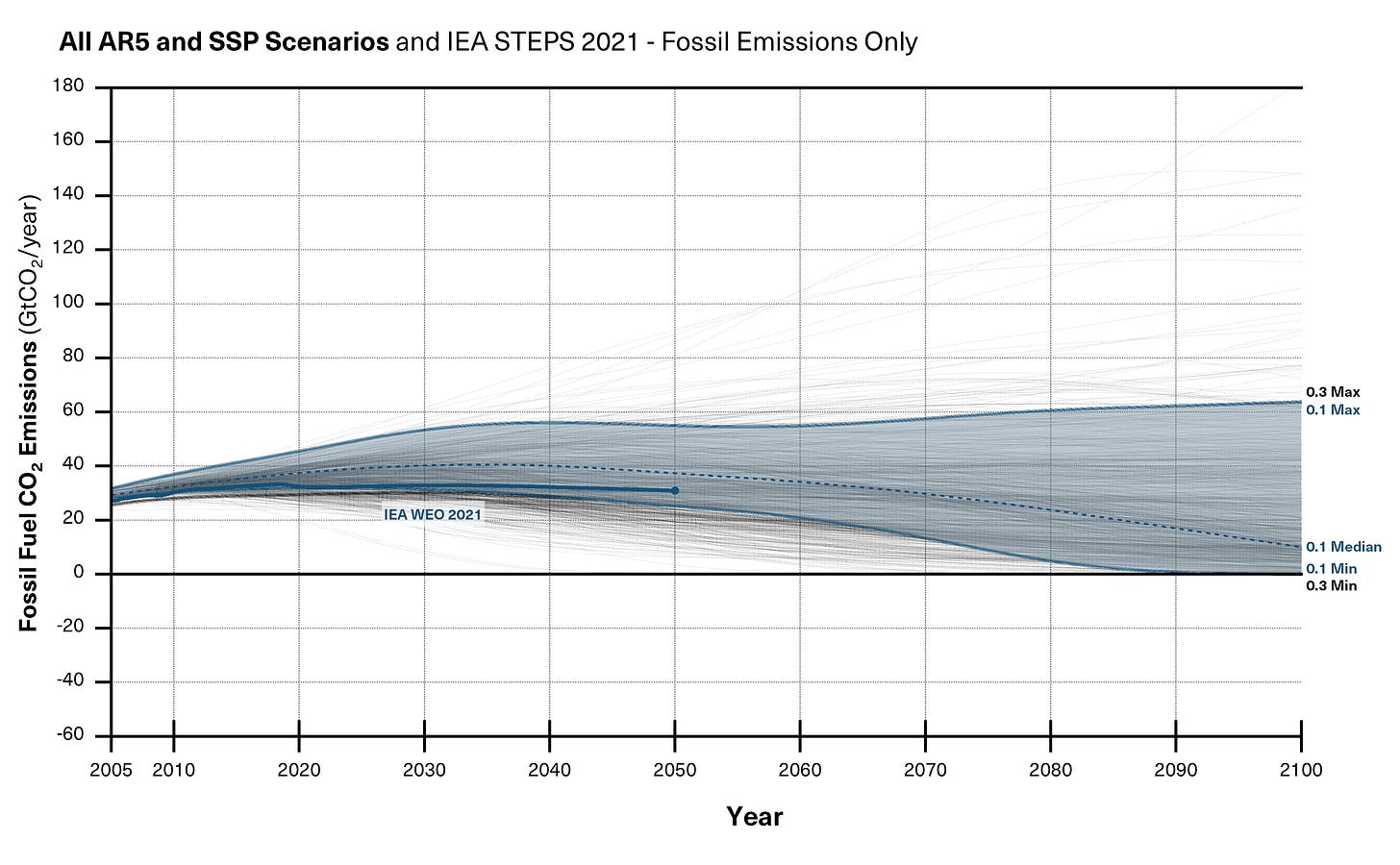
Let’s imagine that as part of our time travel trip we decide to crash a meeting of the IPCC, with our knowledge from the future in hand. How might our future knowledge be received? Let’s imagine . . .
Us: Hello IPCC, we are from the future!
IPCC: You aren’t Terminators are you?
Us: No, but we do come with knowledge from 2022 about which of your 1,311 scenarios are still judged to be plausible in 2022, and which ones can be judged to be implausible representations of the rest of the 21st century.
IPCC: Oh my! That is fantastic news. As you know, the mandate of the IPCC is to use only plausible scenarios, so if we can identify those which are implausible, that would make our work much more relevant to policymakers, which after all is our mission.
Us: Here is what we found: Using our more restrictive criterion, we have identified 71 of your 1,311 scenarios that reman plausible based only on what actually happened 2005 to 2020 and that number is cut in half, to 35, when we also consider the 2020 IEA projections to 2050.
IPCC: Wow. That is a lot of scenarios that hit the cutting room floor.
Us: Right. As we explain, “as the future unfolds, we should fully expect that the subset of available scenarios judged to be plausible shrinks in number over time as reality constrains possibilities as the future becomes the present.”
IPCC: So now I am nervous. In our full set of 1,311 scenarios there are some truly apocalyptic futures. I mean, the scenario that is identified as “business as usual” and is most commonly used in climate research projects that the world will build 33,000 new coal power plants by 2100 and global temperatures might increase by 5 degrees Celsius or more. I’d expect that in 2022 that remains our best guess for the future, right?
Us: Actually, no. We have some very good news for you. Very good news.
IPCC: Tell me! We need some good news on climate.
Us: In a nutshell, all of the plausible scenarios remaining from the ones you are working with today envision less than 3 degrees Celsius total warming by 2100. In fact, the median projection is for 2100 warming of 2.2 degrees Celsius, which is within spitting distance of the Paris Agreement goal of holding temperatures to a warming of 2.0 degrees Celsius.
IPCC: What is the Paris Agreement?
Us: Don’t worry, you’ll find out.
IPCC: I find that both incredibly reassuring and incredibly hard to believe. How did our expectations of the future change so fast?
Us: Long story. But in short, the scenarios you have been using include some pretty dubious assumptions about future energy use. And the world over the next decade will actually start moving on decarbonization. Things really do look a lot different in 2022.
IPCC: That is incredibly good news!
Us: Yes indeed, it is. Of course the challenge of deep decarbonization remains as dauting as ever in 2022, but the extreme scenarios that you have been focusing on appear to be off the table. Have a look at this figure, which shows that the most plausible scenario in 2022 is SSP4-3.4, and of the 11 that the climate research community focuses on, the most extreme 3 are so far removed from reality that they should be reserved for exploratory research rather than for projections . . .
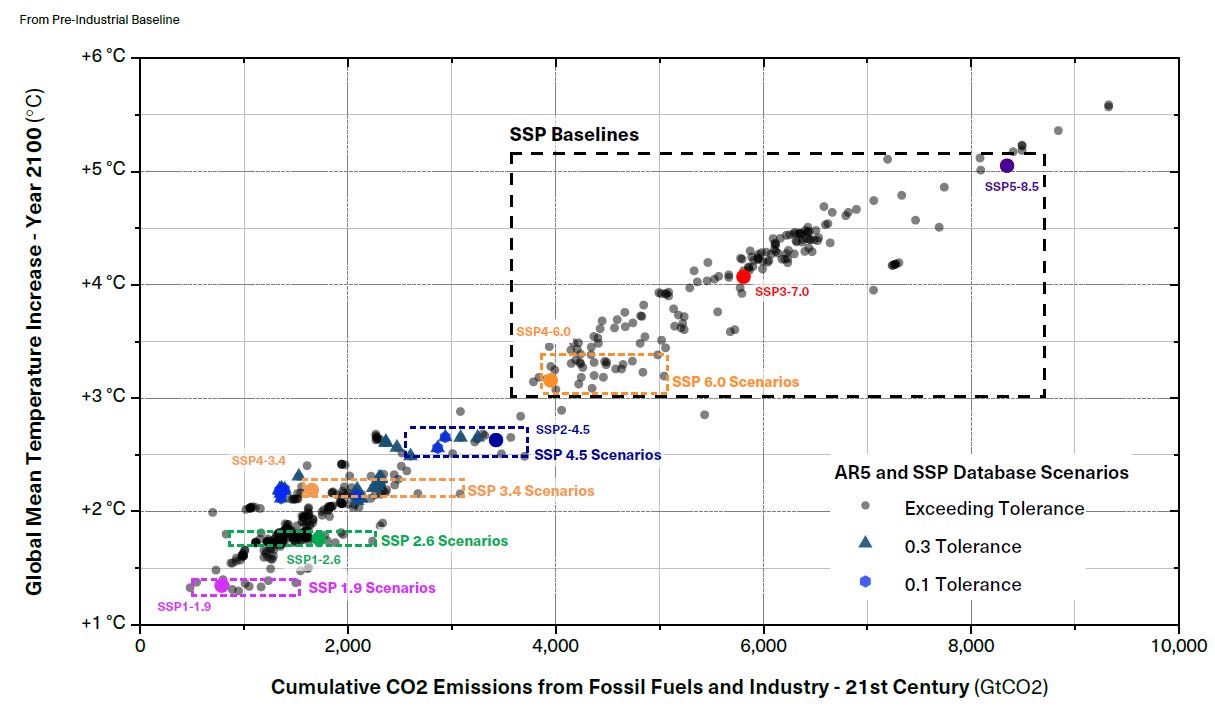
After our nice visit with the IPCC folks back in the day and then returning to the present, we realize that we have a lot of work to do. In the past the IPCC actually never evaluated for plausibility its family of scenarios, nor its subset of 11 used for research. In fact, it is 2022 and the IPCC still doesn’t evaluate its scenarios for plausibility. Of course, in 2022 there are more and different possible futures than were envisioned decades ago, so we need to update our scenarios. In fact, keeping scenarios updated should be a continuous process, lest a gap open up between what is plausible and what we are studying and using to guide policy.
Unfortunately, many people’s view of climate continues to be shaped by implausible futures developed as scenarios many years and even decades ago. Reality is quite different. As we say in our new paper, “Our analysis suggests that the world thus sits in an enviable position to take on the challenge of deep decarbonization, at least as compared to where IPCC baseline scenarios and some of the public discourse projected the world to be in 2021.”
Pielke, Jr., R. M. Burgess and J. Ritchie. Plausible 2005-2050 emissions scenarios project between 2 and 3 degrees C of warming by 2100, Environmental Research Letters, https://doi.org/10.1088/1748-9326/ac4ebf
Paying subscribers to The Honest Broker receive posts with pointers to recommended readings, occasional direct emails with PDFs of my books and paywalled writings and the opportunity to participate in conversations on the site. I am also looking for ways to add value to those who see fit to support my work.
There are three subscription models:
1. The annual subscription: $80 annually
2. The standard monthly subscription: $8 monthly - which gives you a bit more flexibility.
3. Founders club: $500 annually, or another amount at your discretion - for those who have the ability or interest to support my work at a higher level.

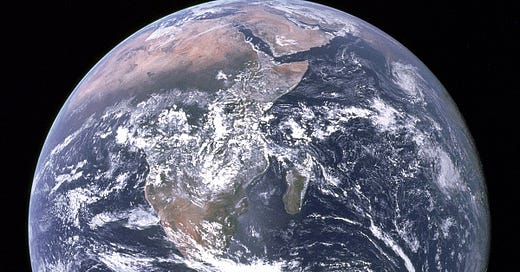



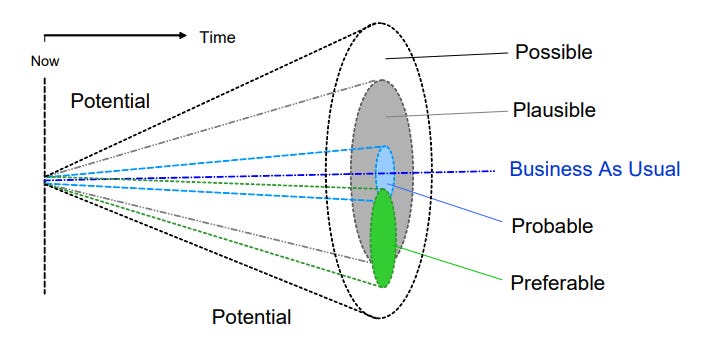
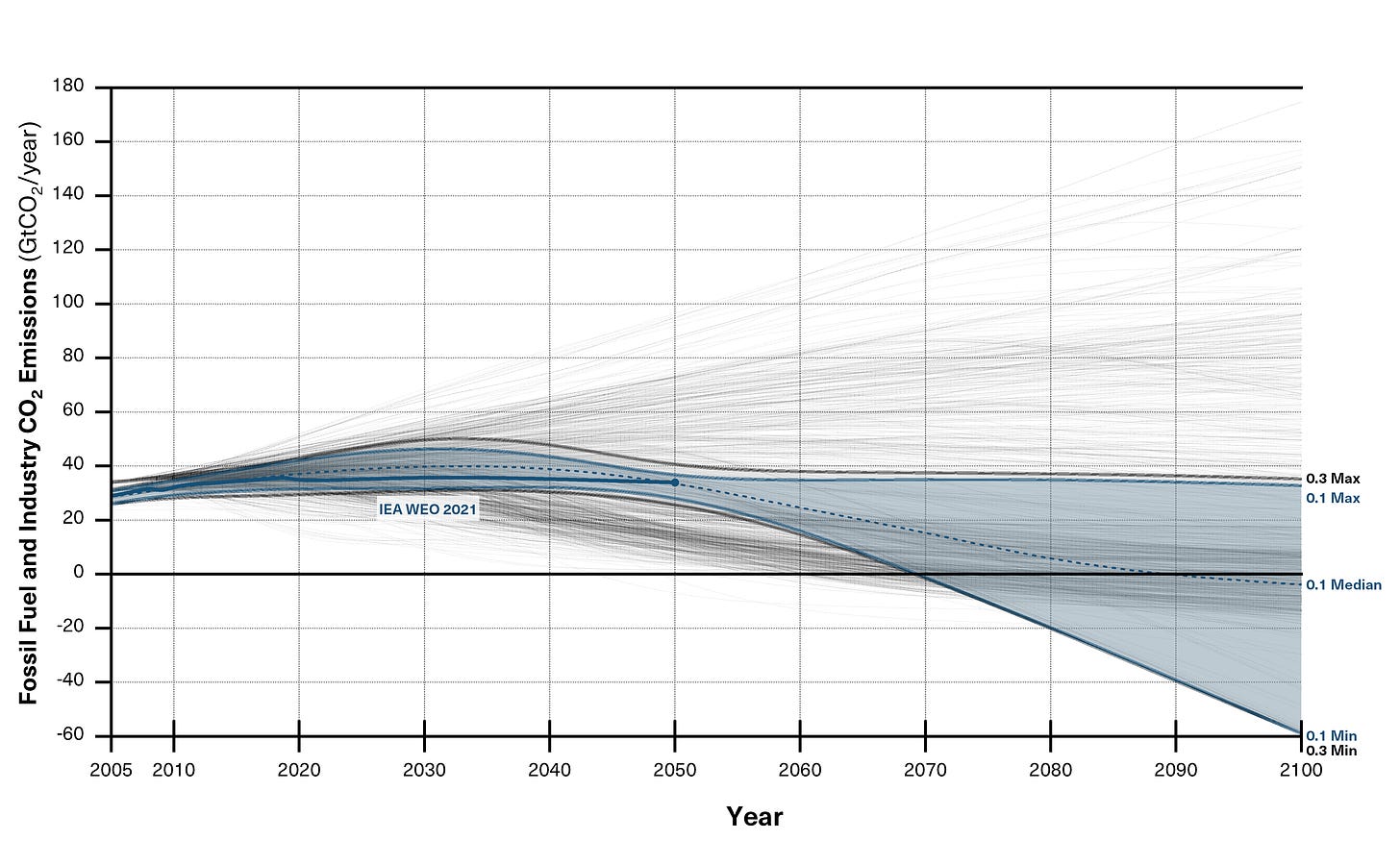
Reading this article gives me hope, and I can't tell you how important that is. Thank you.
Dr Tim Ball - Historical Climatologist
<www.generalistjournal.com>
Book: ‘The Deliberate Corruption of Climate Science’
Book: ‘Human Caused Global Warming, the Biggest Deception in History’
https://www.technocracy.news/dr-tim-ball-on-climate-lies-wrapped-in-deception-smothered-with-delusion/
https://www.youtube.com/watch?v=tPzpPXuASY8